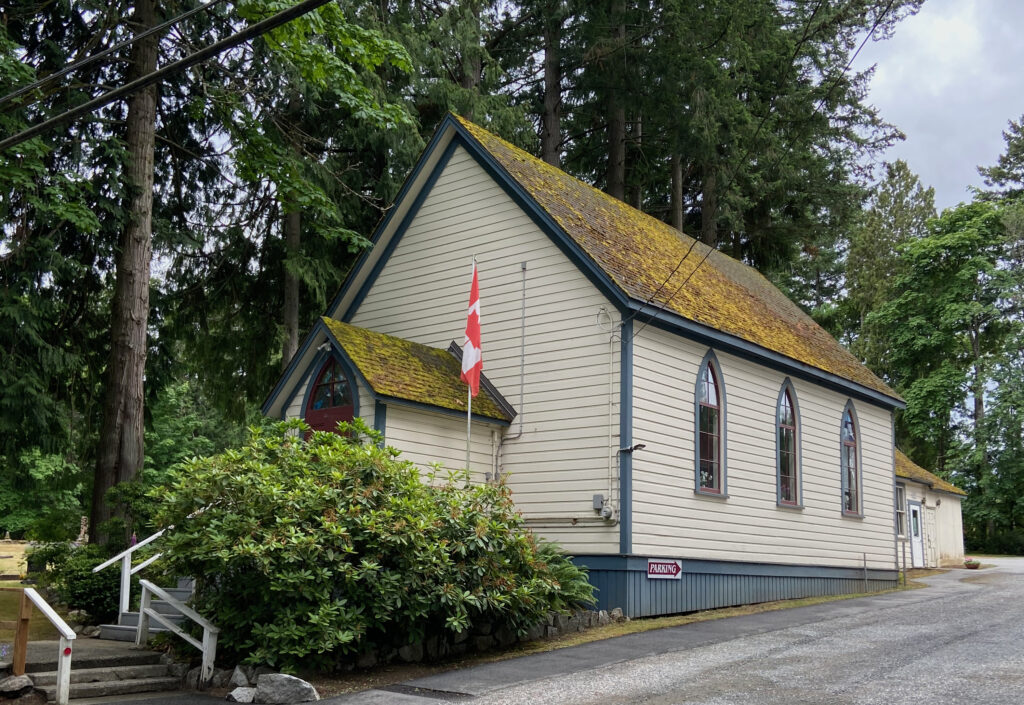by Liberty Bears –
In 1858, several American Black emigrants arrived in Victoria from California hoping for a better life. It was the beginning of the Fraser River gold rush and many people came from around the world in search of opportunity. On the first ship that brought miners from California, the Commodore, there were many Black emigrants who feared repressive measures in the United States and saw the Colony of Vancouver Island as a sanctuary from slavery.
Governor Douglas had invited them to come north. He desperately needed settlers who shared his wariness of the United States and Blacks from California had every reason to resist an expansion of American territory northward. Douglas was very concerned about the numbers of Americans coming to the colony who were attracted to the gold rush, and any attempts at annexation. Douglas also knew that California was not a slave state, but legislators there were enacting discriminatory legislation against Blacks. The state was home to many southerners who supported slavery. Douglas saw the opportunity and invited the Black community to come.
In 1858, the first wave of Black emigrants arrived. They were farmers and businessmen, barbers and dentists in the gold rush towns, teachers and lawyers. The contribution of the Blacks to the early life of Victoria and the surrounding area was significant, but it is much underappreciated. Three notable Black families also arrived – the Alexander, Estes and Spotts families. Not long after their arrival, they settled as farmers on the Saanich Peninsula. Their role as farmers rivaled that of the Hudson’s Bay Company’s in-house efforts to develop local agriculture.
A well-known family to settle as farmers on the Saanich Peninsula was that of Charles and Nancy Alexander. In 1861, the Alexanders arrived on the Saanich Peninsula. They resided in the vicinity of Central Saanich United Church (also known as Shady Creek Church) at 7180 East Saanich Road. The family is well known because Charles initiated and supported the building of the Church and was one of its first preachers. His descendants have continued to remain involved with the Church up until today. Charles was well known for his other contributions to the development of the community, and he was particularly active in the formation of the Agricultural Society. Charles and Nancy moved out of the area 33 years later but some of the children stayed to work in their area and raise their families.
The family of Howard and Hannah Estes was another prominent family to settle on the Saanich Peninsula. Howard owned a large farm on Island View Road. The deed of the sale for the land was registered in January of 1863. Part of the farm was subsequently acquired by Thomas Michell, which still operates today. In 1867, when Thomas Michell bought 125 acres from Howard Estes, he also purchased what was needed for his farming business including cattle, pigs, chicken, turkeys and farm equipment. Howard and Hannah’s son Jackson owned lots to the east in the area commonly known as Michell Valley. Prior to their arrival in Victoria, Howard and Jackson had worked as slaves to drive cattle both ways across the continent and when Howard came to Vancouver Island he brought cattle with him.
Sylvia Estes, Howard and Hannah’s daughter, married Louis Stark before coming to Vancouver Island. Louis and Sylvia Stark initially settled on the Saanich Peninsula in 1859, but they didn’t stay long and moved to Salt Spring Island in 1860. Louis brought cattle to the Island and worked as a dairyman and farmer. Sylvia was a midwife who worked the farm and tended the animals and orchards.
Another family to settle on the Saanich Peninsula was that of Fielding and Julia Spotts. Fielding came to Victoria first and, in 1860, was joined by his wife and two children. He spent over four decades working as a farmer. He obtained cordwood from tree clearing and raised farm animals such as cattle and chickens, orchard crops, and field crops most likely including oats, wheat, barley and peas. Like the other Black farming families, he built a log cabin and farmed several acres. In 1874, he had the prize-winning older steer at the Saanich Agricultural Fair. Fielding was involved in the founding of five churches and served as a school trustee. Along with Charles Alexander, he was involved in establishing the Central Saanich United Church.
Much of the history of Black farming families on the Saanich Peninsula is not as well documented as these three families, which speaks to how the history of marginalized groups has often been ignored. “The absence of Black experience from British Columbia’s official historical memory was not simply the result of absent-mindedness,” writes Adam Rudder in the foreword to Go Do Some Great Thing: The Black Pioneers of British Columbia, by Crawford Killian. Instead, “the term ‘absenting’ here is used to draw attention to the very active process that has rendered Black experience invisible in the official historical record.”
However, certain individuals and organizations like the Log Cabin Museum and Archives in Central Saanich are making an effort to tell the stories of these Black families. According to the directories and voters’ lists, other Black farmers in the area included Andrew Jackson Bennett, who was the first to own the land known as the Centre for Plant Health; and a group known as Moses, Rowden and Marcus Walter who owned land near Elk Lake north of Brookleigh Road. A better understanding of their contribution to farming on the Peninsula may develop over time.
Note: August 1 (as of 1834) is Emancipation Day. Although it didn’t officially end slavery in Canada, it was the beginning of the movement to abolish it in this country.




